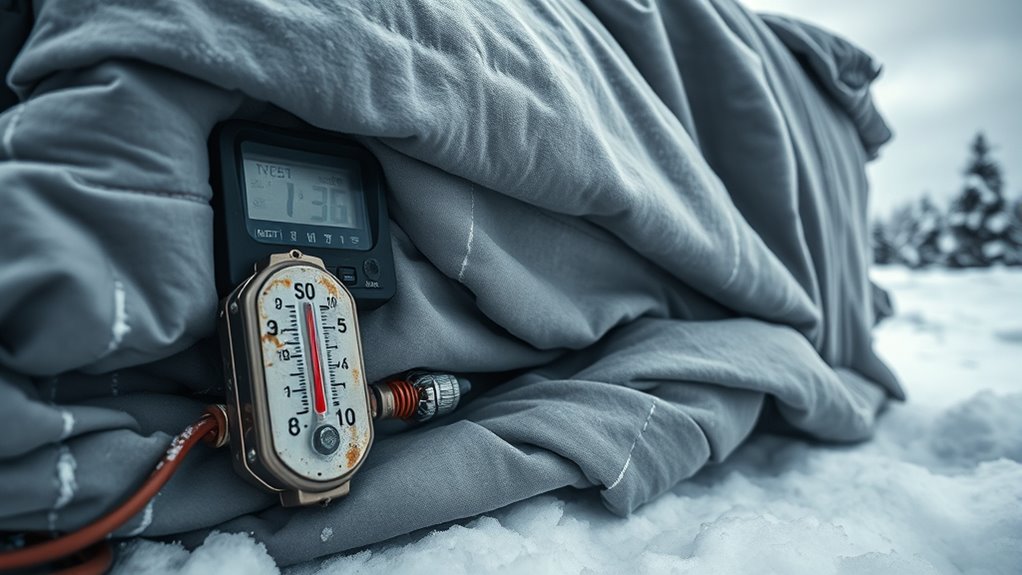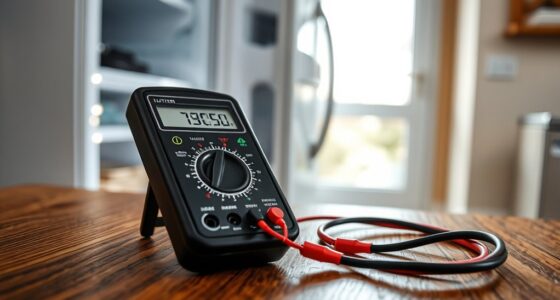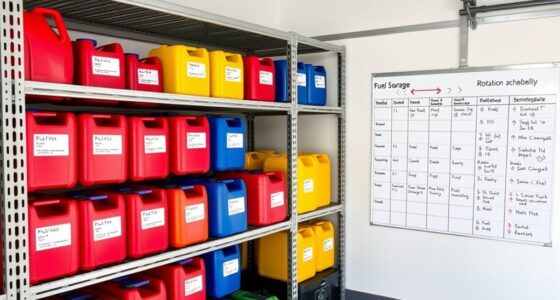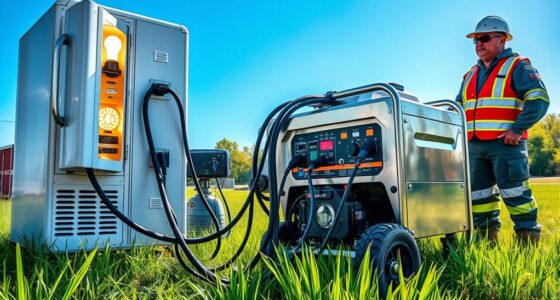Many believe cold weather kits are optional or that any kit fits all generator models, which isn’t true—compatibility and proper selection matter. People think battery warmers are only needed when it’s extremely cold, but they’re essential below 32°F, and standard oil isn’t enough in winter. Installing kits isn’t always simple, and they don’t guarantee perfect startup every time. Skipping maintenance or assuming higher cost means better performance can lead to failure—stay informed to ensure reliable standby power in winter.
Key Takeaways
- Not all cold weather kits are compatible with every generator model; verifying compatibility is essential.
- Many assume kits automatically prevent freeze-ups; proper installation and maintenance are equally critical.
- Budget kits may only offer basic freeze protection and lack features needed for very low temperatures.
- Relying solely on a kit without regular testing and maintenance can lead to unexpected failures during winter.
- Synthetic oils and cold-rated lubricants improve reliability but are often overlooked or misunderstood.
Cold Weather Kits Are Optional in Freezing Climates
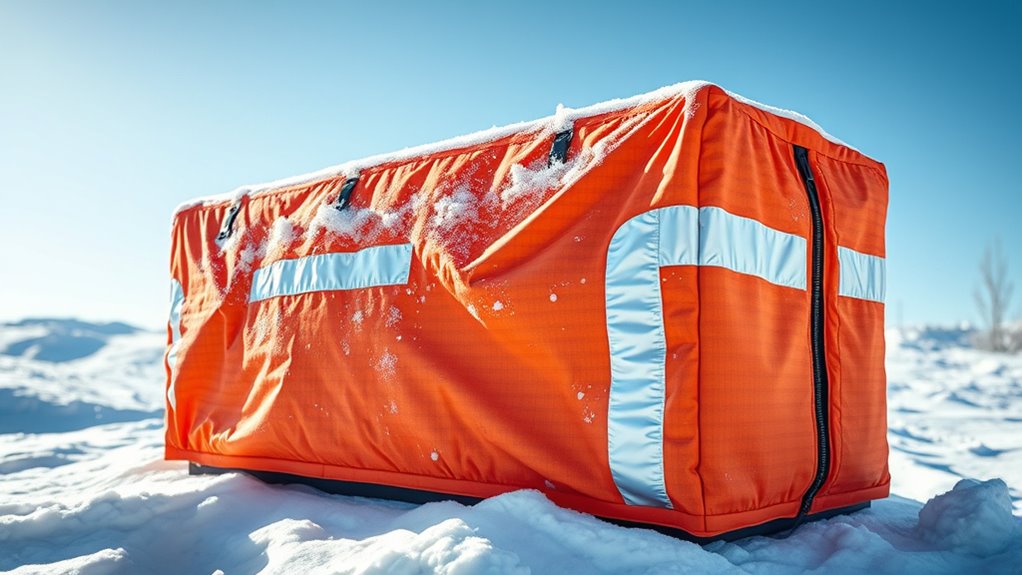
While some may view cold weather kits as optional accessories, in freezing climates, they are often essential for reliable generator operation. Generators typically need these kits to function properly below 32°F (0°C). In fact, regulations require freeze protection during extreme cold, making cold weather kits a necessity rather than an add-on. Operating units without these protections increases the risk of malfunctions, such as frozen fuel lines, damaged filters, or broken instrumentation, leading to forced outages. Many manufacturers specify minimum operating temperatures that demand winterization accessories for consistent performance. Without proper winterization, your generator is vulnerable to cold-related failures, risking costly downtime and compromised reliability during winter. Cold weather kits are designed to prevent freeze damage and ensure continuous, dependable operation in freezing conditions. Proper insulation and thermal protection are crucial components of winterization that help maintain the temperature of critical parts and prevent system failures. To ensure optimal performance, incorporating winterization procedures can significantly extend your generator’s lifespan in harsh winter climates.
Battery Warmers Are Only Needed When Extremely Cold
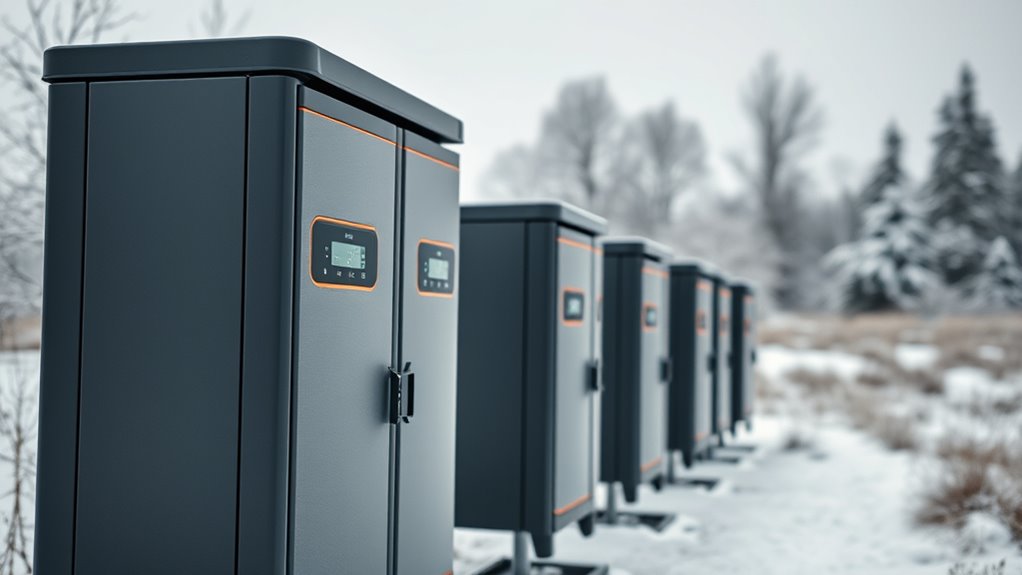
Battery warmers are essential whenever temperatures drop below 32 °F, not just in extreme cold conditions. As temperatures fall, chemical reactions inside the battery slow down, reducing the available current needed to start your generator. Keeping the battery between 40–55 °F prevents cranking amp loss and minimizes cold-start failures, which can be as high as 60%. Warmers use thermostats to activate only when needed, conserving energy. Even moderate freezing can decrease battery capacity and cranking power, risking startup issues. Most generator cold weather kits include warmers as a basic component, reflecting their importance across a range of temperatures. Properly maintained warmers guarantee your standby unit starts reliably, avoiding costly delays or failures during power outages, regardless of whether the weather is mildly or extremely cold. Battery warmers effectively maintain optimal operating temperatures, ensuring reliable generator performance year-round. Additionally, temperature regulation plays a crucial role in maintaining battery efficiency and extending its lifespan.
Standard Oil Works Fine During Winter Operations

Many believe standard oil works fine during winter, but in reality, it thickens in low temperatures, making starting more difficult. This increased viscosity puts extra strain on your generator’s starter and can lead to premature wear or damage. Switching to synthetic or winter-grade oil guarantees better lubrication and more reliable cold-weather performance. Proper viscosity is essential to ensure your generator operates smoothly in winter conditions. Regularly checking and changing your oil is essential to ensure your generator remains ready and operational during harsh winter conditions.
Standard Oil Limitations
Have you ever assumed that standard oil can handle winter conditions without issues? Many believe it works fine, but in reality, standard oils thicken markedly in cold temperatures, making startup harder and increasing engine strain. Using regular or summer-grade oil during winter can lead to poor lubrication, faster wear, and oil starvation due to reduced flow. Thickened oil delays oil pressure buildup after startup, risking engine damage. While standard oils may perform adequately above freezing, they struggle below 0°F, requiring longer warm-up times. Manufacturer recommendations emphasize switching to winter-grade or synthetic oils for cold weather. Relying solely on standard oil can compromise your generator’s reliability during extended cold snaps, even if you have a cold weather kit. Proper oil choice remains essential for dependable winter operation. Additionally, research into sound vibrations suggests they may help enhance oil flow and engine performance in cold conditions.
Cold Temperature Risks
While standard oils are rated for winter use, cold temperatures can still increase their viscosity, making engine startup more difficult even when you rely on conventional formulations. This added resistance puts extra strain on batteries and starters, risking delayed or failed startups. Even with proper oil, extreme cold can slow fuel flow and reduce battery cranking power. To understand the risks, consider this:
| Risk | Impact | Solution |
|---|---|---|
| Viscosity Increase | Harder engine starts | Use winter-rated oils |
| Battery Power Loss | Difficult ignition | Regular battery testing |
| Fuel Blockages | Fuel flow issues | Fuel line maintenance |
Being aware of these risks helps you prepare, but consistent maintenance remains key to winter readiness. Proper maintenance practices are essential to ensure your standby generator operates reliably during cold weather. Additionally, understanding oil viscosity can help you select the best formulations for cold climates, reducing startup complications.
Synthetic Oil Benefits
Switching from conventional oils to synthetic formulations offers notable advantages for winter operations of standby units. Synthetic oils flow better at low temperatures, ensuring quicker lubrication during startup and reducing initial wear on engine parts. Their low pour points allow them to stay fluid even in extreme cold, maintaining protection when conventional oils thicken. Additionally, synthetic oils have lower volatility, meaning less evaporation and longer-lasting lubrication, which extends oil change intervals and reduces maintenance. They resist thermal breakdown, preventing sludge buildup and ensuring consistent engine performance. Most importantly, synthetic oils form a durable film that protects against metal-to-metal contact during cold starts, improving engine reliability and longevity. Industry experts, like Generac, recommend synthetic oils such as SAE 5W-30 for superior winter performance in standby generators. Synthetic oils contain fewer impurities, which helps prevent sludge formation and keeps engines cleaner during cold weather.
All Generator Models Are Compatible With the Same Cold Weather Kit
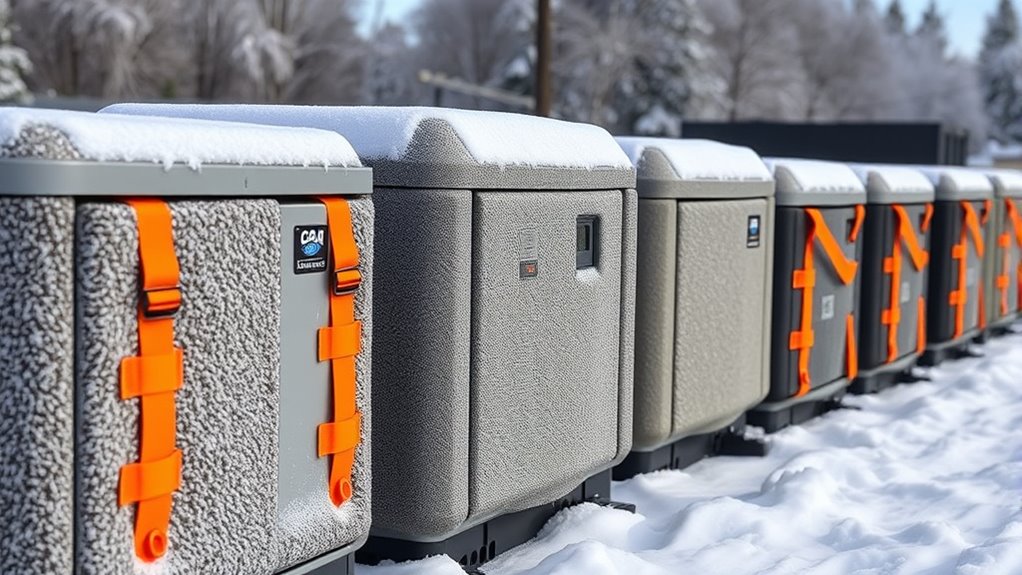
Although it might seem convenient to use a single cold weather kit for all generator models, compatibility actually depends on specific engine types and cooling methods. Air-cooled generators are incompatible with kits designed for liquid-cooled models because their heating needs differ. Cold weather kits are tailored to engine size and model, with separate options for 1.5L or 2.4L engines, and for different wattages like 15kW or 30kW. Using a kit meant for one engine type or size on another can lead to ineffective heating or installation issues. Compatibility is also influenced by manufacturer specifications, such as engine displacement and cooling method. Always check your generator’s model number and manufacturer’s compatibility list before selecting a kit to ensure proper fit and function. Proper compatibility can prevent installation issues and ensure your generator operates efficiently in cold weather.
Installing a Cold Weather Kit Is a Simple, Do-It-Yourself Task

Installing a cold weather kit is a straightforward task that you can typically complete yourself with minimal tools. The process involves attaching components like a battery warmer pad and an oil filter warmer sleeve to your generator. You’ll need to plug the kit into the auxiliary power outlet or wire it to the control panel, following the clear instructions provided. Replacing the engine oil with cold-weather oil is also simple if you’re familiar with your generator’s oil system. Many kits include thermostat controls, activating warmers only below certain temperatures. With basic electrical knowledge and the right tools—screwdrivers, wrenches, and pliers—you can complete the installation in about 30 minutes to an hour. Properly installed, these kits ensure your generator starts reliably during cold weather, which is essential for maintaining power during winter storms. Additionally, understanding how raw food can help improve your energy levels might motivate you to prepare your kit efficiently.
Cold Weather Kits Guarantee Perfect Starting Every Time

Cold weather kits substantially boost your generator’s chances of starting reliably in cold conditions, but they don’t guarantee perfect starts every time. Extreme weather can still cause issues like frozen instrumentation, control system failures, or circuit breaker trips. Properly functioning heat tracing systems are essential, yet if they’re damaged or improperly installed, freeze protection can fail. Generator design differences and auxiliary component vulnerabilities also influence performance, regardless of weather kits. Real-world data shows over 20% of capacity can go offline during prolonged cold spells despite weatherization. In addition, generator control systems may experience failures if not regularly maintained, further impacting reliability during cold weather.
Maintenance Can Be Ignored Once the Cold Weather Kit Is Installed
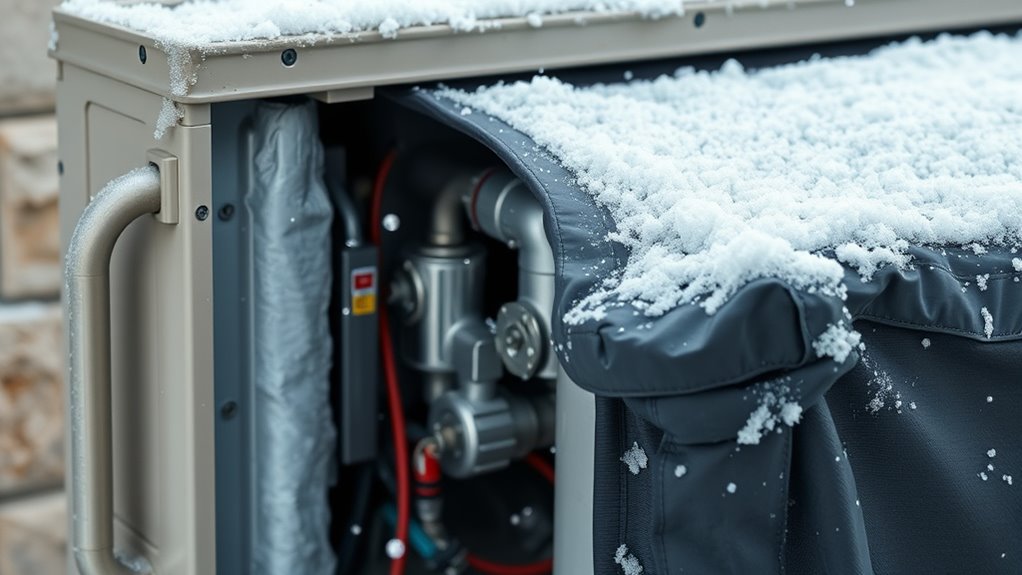
Once you’ve installed a cold weather kit, it’s easy to think maintenance isn’t needed anymore, but that’s a mistake. Regular inspections, oil changes, and system tests are still essential to keep your generator reliable. Neglecting these steps can lead to unexpected failures during critical times. Cold weather can cause battery performance to decline, so monitoring and maintaining your generator’s components is crucial for winter preparedness.
Neglecting Regular Inspections
Even with a cold weather kit in place, neglecting regular inspections can lead to serious issues. Snow, ice, leaves, and debris often block air vents, risking overheating. Maintaining a clearance of 3 to 5 feet around the generator ensures proper ventilation. Keeping pathways clear allows quick troubleshooting during snowstorms. Wet, heavy snow can clog air intakes, starving the engine of air and causing shutdowns if unchecked. Failing to remove contaminants results in inefficient operation or generator failure during outages. Regular checks prevent build-up of debris, ensure ventilation, and identify potential problems early. Proper ventilation is essential for generator performance in cold weather. – Clear vents and pathways from snow and debris – Verify proper clearance for airflow – Remove obstructions around air intakes – Inspect for dirt or blockages that hinder operation. Additionally, understanding industry transformations can help in adopting advanced solutions for maintenance and operation efficiency.
Forgetting Oil Changes
Installing a cold weather kit helps your standby generator operate more reliably in winter conditions, but it doesn’t eliminate the need for regular oil changes. Cold weather components support lubrication but don’t replace fresh oil and filters, which prevent sludge buildup and guarantee smooth operation. Using cold-rated oils requires manual changes to match season needs. Neglecting oil changes causes thick, dirty oil to impair lubrication, increase engine wear, and risk failure during cold starts. Proper maintenance practices ensure your generator remains in peak condition year-round.
Overlooking System Testing
While a cold weather kit can make starting your standby generator easier in winter, it doesn’t eliminate the need for regular system testing. You need to run your generator weekly for 15-20 minutes to exercise mechanical parts and prevent moisture buildup. Testing helps uncover hidden issues before an outage, ensuring reliability. Ignoring this step can lead to unexpected failures when power is most needed. Remember, professional maintenance often includes load testing to verify operational status. Proper testing procedures are essential to confirm that all components function correctly under winter conditions.
- Check transfer switch and control panel functions regularly
- Monitor battery health and replace batteries over three years
- Replace filters and perform oil changes on schedule
- Verify ventilation and inspect fuel lines for degradation
Additionally, conducting comprehensive system checks can further prevent failures during critical times.
Cold Weather Kits Are Only for Emergency Power Outages
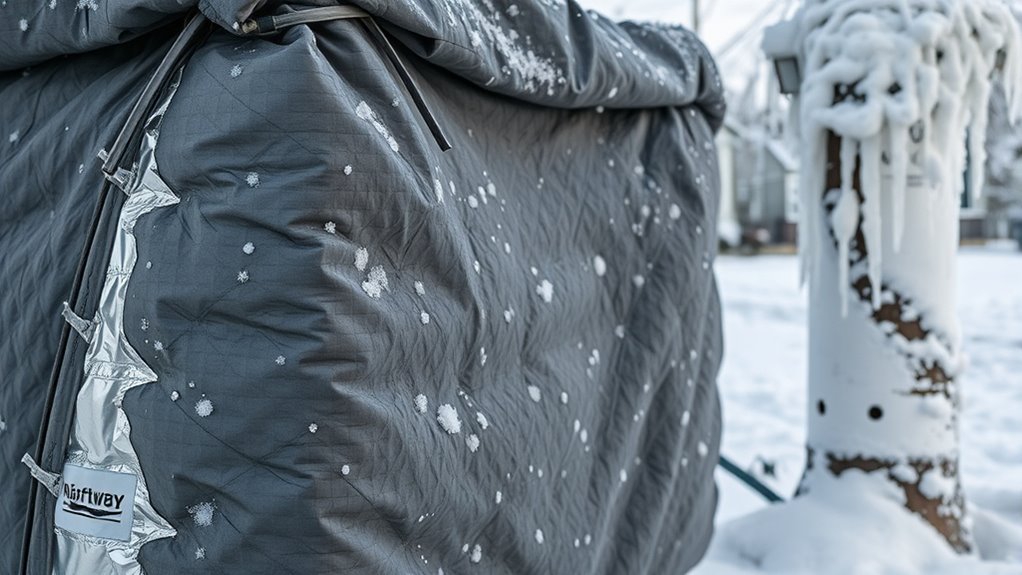
Many people believe cold weather kits are only useful during emergency power outages, but in reality, their purpose extends far beyond that scenario. These kits prepare you for various winter hazards like snowstorms, ice accumulation, and extreme cold, which can disrupt travel and essential services. They include items such as warm clothing, thermal blankets, and chemical heat packs to prevent cold-related illnesses like hypothermia and frostbite. Communication tools like hand-crank radios ensure you stay informed even if power is out. Food, water, and first aid supplies help you manage extended periods of isolation or delayed access to resources. Additionally, cultural impact plays a role in how communities prepare for winter challenges, encouraging proactive safety measures. Overall, cold weather kits enhance your safety and comfort during any winter challenge, not just power failures.
Higher Cost Means Better Cold Weather Performance

Investing in a higher-cost cold weather kit doesn’t automatically mean you’ll get better performance in freezing conditions. The key factor is the kit’s design and compatibility with your generator model, not just the price. Some standard kits protect down to zero degrees Fahrenheit and offer optional add-ons for colder weather. Premium kits often include multiple heating components—oil, battery, breather tube—that boost reliability in extreme cold but increase costs. Conversely, budget kits cover basic freeze protection but lack advanced features for very low temperatures. The price also varies based on wattage coverage and generator type, not necessarily durability.
- Advanced kits include thermostats for automatic heating regulation
- Heating engine oil, battery, and air intake speeds startup
- Remote monitoring helps detect issues early
- Insulated, corrosion-resistant enclosures enhance protection
- Proper testing and maintenance are essential to ensure the kit performs effectively in harsh winter conditions.
Frequently Asked Questions
Can Cold Weather Kits Be Used With All Types of Standby Generators?
Cold weather kits can’t be used with all standby generators. They’re designed for specific models and cooling types, mainly air-cooled or liquid-cooled. If you try to use an incompatible kit, it might not fit or work properly, possibly causing damage. Always check your generator’s manufacturer guidelines or consult a professional before installing a cold weather kit to verify compatibility and avoid issues.
How Often Should I Inspect and Maintain My Cold Weather Kit?
You should inspect and maintain your cold weather kit every 1 to 6 months, depending on storage conditions and sealing integrity. Regularly check expiry dates, replace brittle gloves and waste bags, and remove foreign materials to keep the kit ready. If conditions are especially harsh, increase inspection frequency. Keep detailed records of all inspections and repairs to guarantee compliance and readiness, adapting your schedule as needed for extreme weather or environmental factors.
Are There Specific Signs Indicating My Cold Weather Kit Needs Replacement?
When your cold weather kit starts showing cracks, corrosion, or damaged wiring, it’s time to face the music. If the battery temperature isn’t staying within specs, or the heaters take longer to warm up, those are red flags. Fluctuating heat, extended warm-up times, or signs of wear beyond the kit’s lifespan also signal it’s time for a replacement. Staying vigilant keeps your standby unit ready for action.
Do Cold Weather Kits Affect Generator Warranty or Service Agreements?
Cold weather kits generally don’t void your generator warranty if they’re manufacturer-approved and properly installed. You should keep receipts and follow installation instructions to avoid issues. Using the right kit helps maintain your generator’s performance in cold conditions, which is often required by service agreements. Make sure certified technicians handle installation if necessary, and document everything to safeguard your warranty remains valid during winter operations.
Can I Install a Cold Weather Kit on an Older Generator Model?
You can install a cold weather kit on your older generator, but first, check if it’s compatible. Imagine your generator bundled in a cozy winter coat—kits with battery warmers and oil heaters fit specific models. You’ll need to verify model numbers and cooling type, as air-cooled units can’t utilize liquid-cooled kits. Proper installation ensures your generator starts reliably, even in the harshest cold snaps.
Conclusion
Don’t let misconceptions freeze your judgment. Cold weather kits aren’t magic shields but savvy tools to keep your standby units humming like a well-tuned symphony in winter’s harshest symphony. Think of them as your unit’s warm coat—essential, but not a guarantee against all cold surprises. Stay informed, stay prepared, and remember: a little maintenance now keeps your power flowing like a steady mountain stream through winter’s icy grip.

